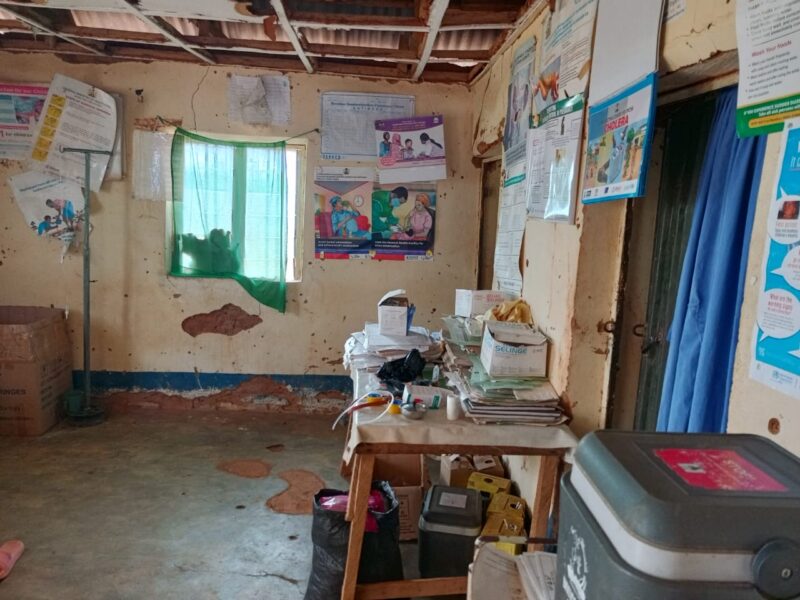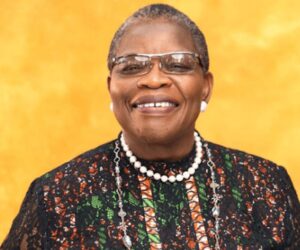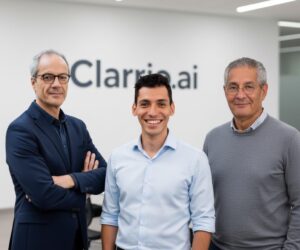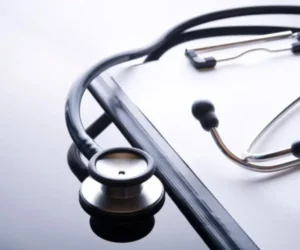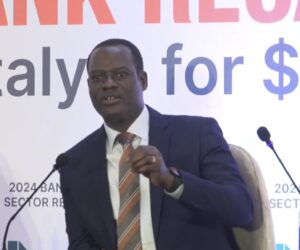In Plateau State’s Bokkos Local Government Area, grief is no longer a visitor; it has become a resident. Waves of armed attacks have left villages deserted, homes razed, and families forced into makeshift camps. For survivors, the struggle does not end with escaping bullets and machetes alone; it continues in their daily fight to find health care.
An investigation by Dana Daniel Zagi reveals how budget irregularities in Bokkos’ primary health care system have deepened the suffering of already traumatised communities. Despite huge allocations running into hundreds of millions of naira in the past three years, documents and interviews show that most health centres remain underfunded, understaffed, and in ruins.
SPONSOR AD
A MOTHER’S STRUGGLE AT AN IDP CAMP
At the Internally Displaced Persons (IDP) camp in St. Thomas Catholic Church, Bokkos town, 30-year-old Monica Jonah sits quietly on a plastic chair. Her week-old baby is strapped to her back, wrapped in a faded multi-coloured cloth. She recalls fleeing her home in Kadim village, 15 kilometres away, while eight months pregnant.
“I ran so fast I even forgot I was pregnant. It was life and death,” she said softly. Monica delivered her baby at Bokkos Cottage Hospital but has not been able to return for postnatal checks or immunisation. “The hospital is far from here, and I don’t have transport money. Even when you get there, you still pay for services. I just thank God I am alive.”
Her story is not unique. Across Bokkos, residents displaced by violence face a collapsing health system; one crippled not just by conflict, but also by corruption and neglect.
Systemic corruption
This crisis reflects a broader national reality: a 2025 analysis by Chatham House ranks Nigeria among the 40 most corrupt countries globally, with corruption deeply embedded in public administration and service delivery.
The Chairman, Bokkos local government, Amalau Samuel, hinted at such corruption in PHCs within the LGAs when he said that “staff in some PHCs deliberately conceal government-supplied drugs, choosing instead to sell privately purchased medications to patients for personal profit. Only after exhausting their own stock do they release the government-provided drugs. This trend often leads to essential medicines expiring unused.”
A 2020 study published in the International Journal of Health Policy and Management identified absenteeism, procurement-related corruption, under-the-counter payments, and employment-related corruption as the most damaging practices in Nigeria’s health sector. Practices that continue to undermine care for millions are already pushed to the margins. https://www.ijhpm.com/article_3723_84685e1be6a6cffcd2e6527d7e5b718c.pdf
Meanwhile, according to UNHCR’s Nigeria dashboard as of August 2025, the country hosts 3.57 million internally displaced persons—millions navigating broken systems in search of survival.
https://data.unhcr.org/en/documents/details/118077
 Picture of women and children at St. Thomas Catholic Church premises, Bokkos.
Picture of women and children at St. Thomas Catholic Church premises, Bokkos.
BUDGETS ON PAPER, NOTHING IN PRACTICE
According to the Director of Primary Health Care in Bokkos, Mr. Joseph Lar Dashe, the local government has 106 primary healthcare centres, out of which 97 are functional, with 225 health workers serving a population of about 200,000 people.
A budget document obtained from Dashe, through a Freedom of Information (FoI) request in June 2025, paints a grim picture of the funding and service delivery of these primary health facilities.

The document covered three years: 2023, 2024 and 2025. Approved budgets rose from ₦192 million in 2023, remained the same in 2024, and increased to ₦246 million in 2025.


But under the column “Funds Used by Facilities,” the entry was a simple word: NIL,
In other words, none of the 97 functional PHCs in Bokkos received direct funding in any of the three years, even though Dashe told the reporter that the budgeted sums were 100 per cent dispensed.
According to him, allocations from the local government “only go for salaries and other allowances or logistics for special programmes, that is all.”
This explained why the personnel and overhead costs gulped a larger chunk of the budget. In 2025, salaries consumed ₦177.2 million, or 72 per cent of the total budget. Allowances gulped another ₦80.8 million, bringing personnel expenses to over ₦258 million, an amount ₦12 million higher than the entire budget approved for that year.
The same pattern appeared in 2024, when personnel costs of ₦224.8 million were charged against an approved budget of ₦192 million. That year alone, staff expenses jumped by 158 per cent compared to 2023.

Recall that in July 2024, Nigeria signed into law a new minimum wage of ₦70,000, which revised the previous ₦30,000 minimum wage set in 2019.
This New wage, effective from May 2024, might not be unconnected to the significant increase in salaries and wages as reflected in the budget.
Speaking about the implications of poor funding of PHCs by Local Governments, Alhassan Yahaya, Chairman of Maternal-Neonatal Child Healthcare (MSCH) in Gombe state said “99 per cent of PHCs in Nigeria channel their budget to salary and wages as well as personnel. This is to tell you that Local Governments don’t fund PHCs.
Thank God that the federal government came up with initiatives of revitalising healthcare, like the basic healthcare provision fund, but if for any reason that funding stops, the primary healthcare will suffer, which means more women and children are going to die.”
DRUGS AND SUPPLIES REDUCED TO CRUMBS
While salaries swelled, money for medicines shrank. In 2025, just ₦5 million was set aside for “Drugs/Lab/Medical Supplies.” Spread across 97 facilities, that amounts to an average of ₦4,292 per centre per month.
For context, Pharmacist Kim Jerry Bot, the DG of Plateau State Drugs and Medical Commodities Management Agency, said such an amount cannot be enough to treat malaria for an individual. “Treating Malaria now is more than 7,400 naira on average, including investigations,” let alone stock a community health facility.
Christiana Ajawa, a 60-year-old resident of Daffo, confirmed this reality.
“Most of the medicines we need are not available. They mostly give us paracetamol for everything,” she said.
Another resident, Eli John, who has delivered seven children at Daffo PHC, acknowledged improvements in antenatal and postnatal care, but lamented the lack of drugs. “That is our biggest setback,” she admitted.
Responding to corrupt practices within PHCs that hinder patients from accessing drugs in facilities. The chairman Bokkos local government, Amalau Samuel mentioned that there are now mechanisms put in place to ensure citizens benefit from government interventions on medicines.
This, according to him, involves community leaders and village heads reporting such corruption.
According to a 2022 United Nations Development Programme (UNDP) review of Nigerian PHCs, fewer than half of public PHCs nationwide had consistent medicine stocks.
However, in Bokkos, “Miscellaneous” spending in the budget ballooned from ₦3 million in 2023 to ₦22.5 million in 2025, with no breakdown provided. Travel and transport gulped ₦6 million, more than the drug budget, while printing alone consumed ₦2 million.

HEALTH CENTRES IN RUINS
The challenges are not just financial. Months of violent attacks in Bokkos communities have destroyed or shut down several PHCs.
According to Dashe, five facilities were burnt: Hokk, Kopmur, Hurti, Shorom and Suwa.


Suwa PHC destroyed
 Shorom PHC
Shorom PHC
 Inside Shorom PHC
Inside Shorom PHC
 Hurti PHC
Hurti PHC
 Inside Hurti PHC
Inside Hurti PHC
In Kaban village, the reporter found the PHC locked and deserted.
Two women working on a nearby farm, who pleaded that their identity be concealed, explained that the facility had been locked for weeks as health workers had fled.
 Kaban PHC
Kaban PHC
In Horop, the PHC had been moved to a small shop-like structure by the roadside while renovation of its permanent site stalled.
 Horop PHC
Horop PHC

Inside Horop PHC
Dabit Clement Joseph, the youth leader of Horop, who lamented that the temporary site was too small and could not admit patients, pleaded that something be done. “Though our community has not been attacked, affected persons from nearby communities who came in need of medical assistance could not access the PHC because it is mostly locked. Even when some do, the size of the current facility is so small that patients who come for treatment cannot be admitted, because the hospital only operates from a small room.”
A man who identified himself as a security staff member living close to the Horop PHC under renovation described that “The workers came once, dropped materials for the new building and never returned.”
With this development, residents of Horop face a critical healthcare gap, as the abandoned renovation and inadequate temporary clinic leave them without reliable access to medical treatment in sight.
 Horop PHC under construction
Horop PHC under construction
 Horop PHC under construction
Horop PHC under construction
Sources who spoke to the reporter in communities that were attacked said that health facilities were targeted during attacks. Equipment was stolen or destroyed in Kopmur, Hurti, Hokk, Shorom, Marshi, Horop and Kaban.
“One of our staff lost his life,” Dashe said sadly, adding that “normal services have been paralysed because health workers closed facilities out of fear.”
Two PHC workers from different facilities admitted that the crisis had worsened the already dire staffing shortage. Volunteers fill critical gaps, but without pay or official recognition.
NOT ENOUGH HANDS TO WORK
Even before the attacks, Bokkos was struggling with a manpower crisis. With only 225 health workers for about 200,000 residents(this is according to local government estimates and population projections based on the 2006 census), the ratio is one health worker for every 800 people. Meanwhile, the World Health Organization (WHO) recommends one to 225 people.
Three PHC health workers, who spoke anonymously for fear of losing their jobs, said they were overwhelmed.
“In our facility, we are expected to run three shifts. But we are just two employed staff, one CHEW (Community Health Extension Worker) and a volunteer. It is impossible to cope. What happens when we break down?” one of them asked.
The Federal Ministry of Health and Social Welfare, in a 2024 report, revealed that Nigeria has only 1.83 health workers per 1,000 people, which falls far below the WHO benchmark of 4.45 per 1,000.
BIGGER PICTURE OF SYSTEMIC NEGLECT
The problems in Bokkos mirror national challenges. The Basic Health Care Provision Fund (BHCPF), created in 2014 to strengthen PHCs using one per cent of federal revenue, supports 14 facilities in Bokkos.
Mr Dashe, while confirming support for drugs to the facilities benefiting from the BHCP fund, acknowledged that the project gives “them (the 14 PHCs) money for drugs from the Drug Revolving Funds. “But besides buying the drugs, when the PHC realises that they still have drug supplies, they could use the funds for minor repairs of the facilities like windows, cracks on walls or wells.”
Mr. Dashe’s remarks, while seemingly supportive of the flexibility granted to PHCs under the Basic Health Care Provision Fund (BHCPF), inadvertently expose a deeper issue of systemic mismanagement and lack of oversight.
A retired director of PHCs in Bokkos, Mrs. Mildred Gokum, said the neglect has been long-standing. “There is a yearly budget from the LGA, but nothing is released for projects. Proposals for drugs are ignored. Staff strength has always been poor.”
The World Bank, in its health financing reports, also links weak PHC performance to poor governance at the facility level. It notes that only 30 to 40 per cent of Nigeria’s public PHCs are functional, and about 40 per cent of those lack electricity. Many facilities average just six to 10 hours of power daily, undermining vaccine storage and emergency services.
THE HUMAN COST
As centres remain shut, residents are forced to travel long distances or rely on private chemists. Women risk childbirth without skilled care. Children miss vital immunisations, and common illnesses become deadly.
The World Health Organisation and UNICEF both use the completion of the third dose of the DTP (diphtheria, tetanus toxoid, and pertussis) vaccine (DTP3) as a measure of PHC strength.
Nigeria’s DTP3 coverage remains around 62 per cent, far below the universal coverage goal of 90 per cent. In Bokkos, where drug budgets are crumbs and PHCs lie in ruins, that figure is even lower.
At the IDP camp in St. Thomas Catholic Church, Monica rocked her newborn gently. She has no idea when he will receive his first vaccination.
Bokkos communities are not only battling the trauma of violent conflict. They are also victims of a silent war waged through corruption and neglect in their health system.
Budgets exist on paper, but facilities see nothing. Salaries balloon, but medicines vanish. Buildings are burnt or abandoned. Health workers are too few, and those who remain are overworked and afraid.
The result is a health system paralysed by irregularities, leaving families at the mercy of both insecurity and disease. Unless accountability returns to PHC financing, Bokkos and many communities like it across Nigeria will continue to pay the ultimate price.
Government reacts
The plateau state commissioner for health, Dr Nicholas Ba’amlong, during a telephone interview with the reporter, noted that “when you see one local government budget and what they do, it does not translate to the others.”
Adding that the findings in Bokkos might not be the same as other local governments in the state, Ba’amlong noted that the issue was not about corruption.
He therefore said that the government is making out mechanisms to see that the Drug and Medical Commodities Management agency takes responsibility for the supply of drugs in all the primary healthcare centers. “For now, what they are doing is supplying the basic healthcare provision fund facilities, which are present in all the local governments, because not all PHCs are under the basic healthcare. Before now, the facilities themselves buy drugs and continue to sell the way they want without control.”
This report was facilitated by the Wole Soyinka Centre for Investigative Journalism (WSCIJ) under its Report Women Female Reporters Leadership Programme (FRLP) Fellowship, with support from the Bill & Melinda Gates Foundation.

